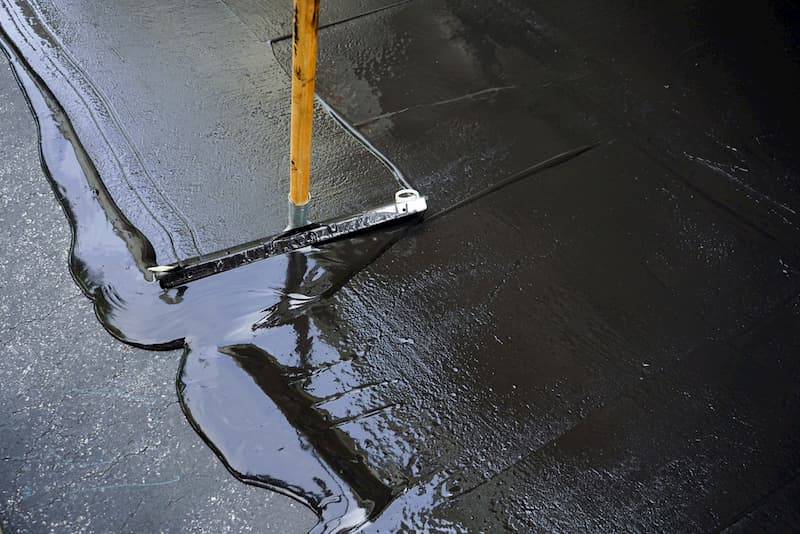Unleash the Potential: Regrading and Asphalt Sealing for Commercial Spaces
Unleash the Potential: Regrading and Asphalt Sealing for Commercial Spaces
Blog Article
Hot Mix Asphalt: A Sustainable Service for Pavement
Hot Mix Asphalt (HMA) has become a leading sustainable choice for pavement solutions, providing a myriad of environmental benefits and innovative technologies. Its ability to minimize and reuse products energy consumption presents a compelling case for its adoption in road construction tasks. The lasting performance and toughness of HMA make it a favored choice for facilities development. As the need for eco-friendly building and construction methods grows, exploring the subtleties of HMA's sustainability can offer valuable understandings into the future of pavement options.
Environmental Benefits of Warm Mix Asphalt
Additionally, Hot Mix Asphalt assists to alleviate urban warmth island effects. Its dark shade absorbs sunshine, minimizing the quantity of warm showed back right into the atmosphere contrasted to lighter-colored sidewalks. This can decrease ambient temperature levels in metropolitan locations, lowering the demand for a/c and eventually minimizing energy consumption.
In addition, Warm Mix Asphalt adds to improved stormwater monitoring. Its porous nature enables water to charge and infiltrate the pavement groundwater materials, decreasing runoff and the danger of flooding. These environmental benefits make Hot Mix Asphalt a sustainable choice for leading freeways and roadways.
Power Performance in HMA Production
Is energy efficiency a critical consider the manufacturing of Warm Mix Asphalt (HMA)? Definitely. Power plays a considerable function in the production of HMA, impacting both cost and ecological sustainability. One essential aspect of power effectiveness in HMA production is using warm mix asphalt (WMA) technologies (regrading). WMA enables the blending and placement of asphalt at lower temperature levels contrasted to standard warm mix asphalt, leading to reduced energy usage throughout manufacturing. This procedure not just decreases gas use however likewise lowers greenhouse gas discharges, making it an extra ecologically friendly alternative.
Furthermore, innovations in plant modern technologies have led to more energy-efficient HMA production procedures. By maximizing energy usage in HMA production, the sector can decrease its carbon footprint while preserving high-grade pavement materials.
Recyclability of Warm Mix Asphalt
The recyclability of Hot Mix Asphalt (HMA) is a crucial aspect of its sustainability and lasting environmental effect. HMA is just one of the most recycled materials in the USA, with over 100 million bunches of redeemed asphalt sidewalk (RAP) being recycled yearly in new sidewalk building and construction. Reusing HMA offers a number of environmental benefits, such as decreasing the need for virgin materials, decreasing power intake throughout manufacturing, and decreasing the amount of waste sent out to land fills.
The procedure of reusing HMA includes milling the existing sidewalk, squashing it into smaller pieces, and mixing it with brand-new accumulation and asphalt binder to create a recycled mix. Generally, the recyclability of HMA plays a substantial role in advertising sustainable practices within the pavement sector.

Long-Term Performance of HMA
Asphalt sidewalks show durability and resilience over a prolonged period, reflecting the long-term efficiency of Hot Mix Asphalt (HMA) The longevity of HMA can be associated to its capacity to endure heavy traffic loads, harsh weather, and the results of aging. Studies have revealed that properly designed and correctly created HMA sidewalks can last for two decades or even more with regular upkeep. The secret to maximizing Click Here the lasting efficiency of HMA depends on using top quality materials, adhering to best practices in building and construction, and executing efficient maintenance strategies. Proper drain, regular assessments, and prompt fixings are necessary for protecting the architectural integrity of HMA pavements over time. Furthermore, innovations in HMA innovation, such as using polymer-modified binders and warm mix asphalt, have better boosted the sturdiness and durability of HMA pavements. By focusing on quality building and upkeep practices, HMA remains to confirm itself as a economical and sustainable option Full Report for lasting sidewalk facilities.

HMA: Toughness and Sustainability
Showing both resilience and sustainability, Warm Mix Asphalt (HMA) has become a keystone in the construction of long-lasting pavement frameworks - regrading. HMA's durability originates from its ability to withstand heavy loads, harsh weather, and high web traffic quantities, making it a trustworthy choice for highways, highways, and airport terminal runways. The make-up of HMA, which usually consists of aggregates, binder, and filler, plays an important role in improving its long life and resistance to tear and wear
Moreover, HMA's sustainability hinges on its recyclability and energy-efficient manufacturing process. The capacity to reuse reclaimed asphalt pavement (RAP) in new HMA mixes decreases the demand for virgin products and lessens the environmental influence of pavement construction and maintenance. Furthermore, the power effectiveness of creating HMA lies in its reduced blending temperatures compared to various other pavement materials, resulting in lowered energy consumption and greenhouse gas emissions.
Verdict
In final thought, warm mix asphalt (HMA) provides a lasting solution for pavement with its eco pleasant attributes. HMA's recyclability, energy effectiveness in manufacturing, and lasting sturdiness make it a green option for roadway building and construction.
HMA is one of the most recycled materials in the United States, with over 100 million lots of recovered asphalt sidewalk (RAP) being recycled annually in new sidewalk building and construction.The procedure of reusing HMA involves crushing the existing pavement, squashing it into smaller items, and blending it with brand-new accumulation and asphalt binder to produce a recycled mix.Asphalt pavements demonstrate sturdiness and resilience over an extensive period, mirroring the long-term performance of Hot Mix Asphalt (HMA) Additionally, innovations in HMA technology, such as the usage of polymer-modified binders and cozy mix asphalt, have actually even over here more enhanced the longevity and longevity of HMA pavements. The capacity to reuse redeemed asphalt pavement (RAP) in new HMA combinations reduces the need for virgin materials and lessens the ecological impact of sidewalk building and construction and upkeep.
Report this page